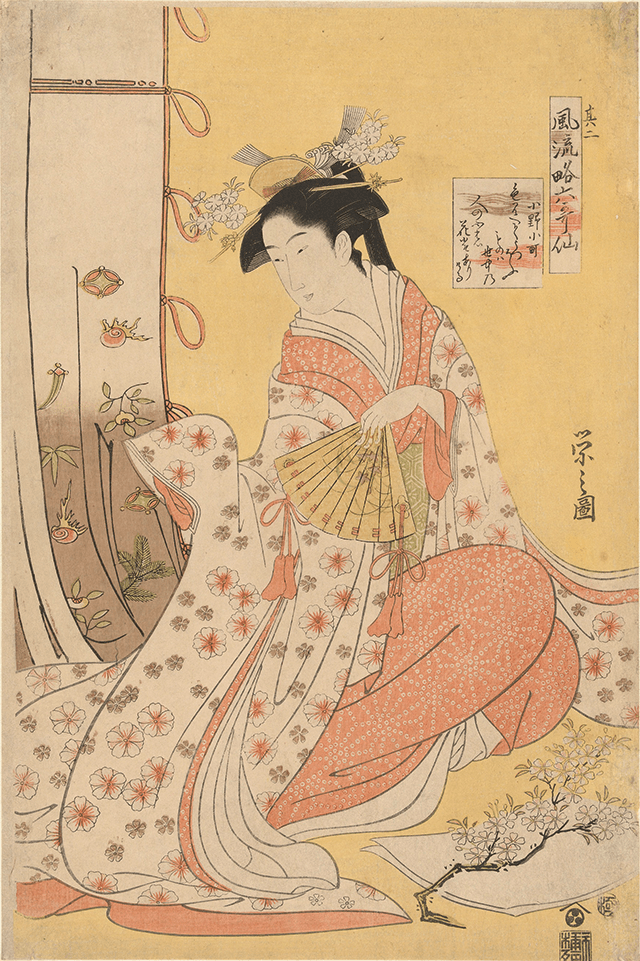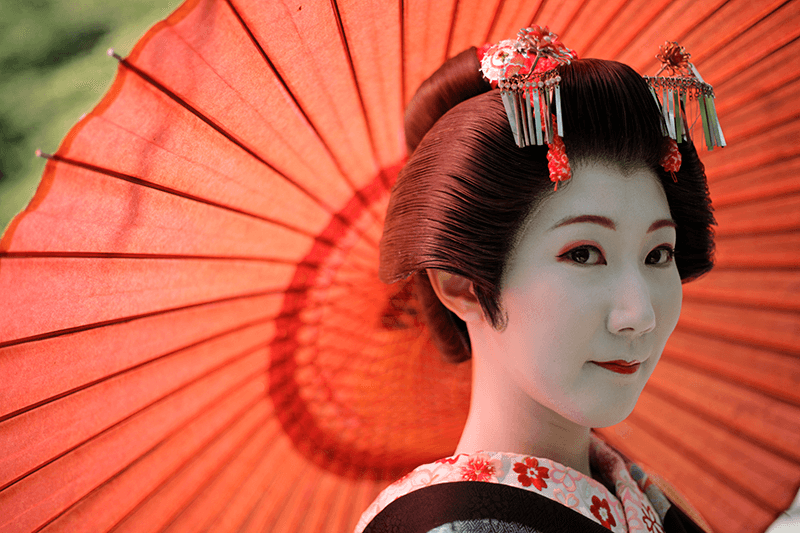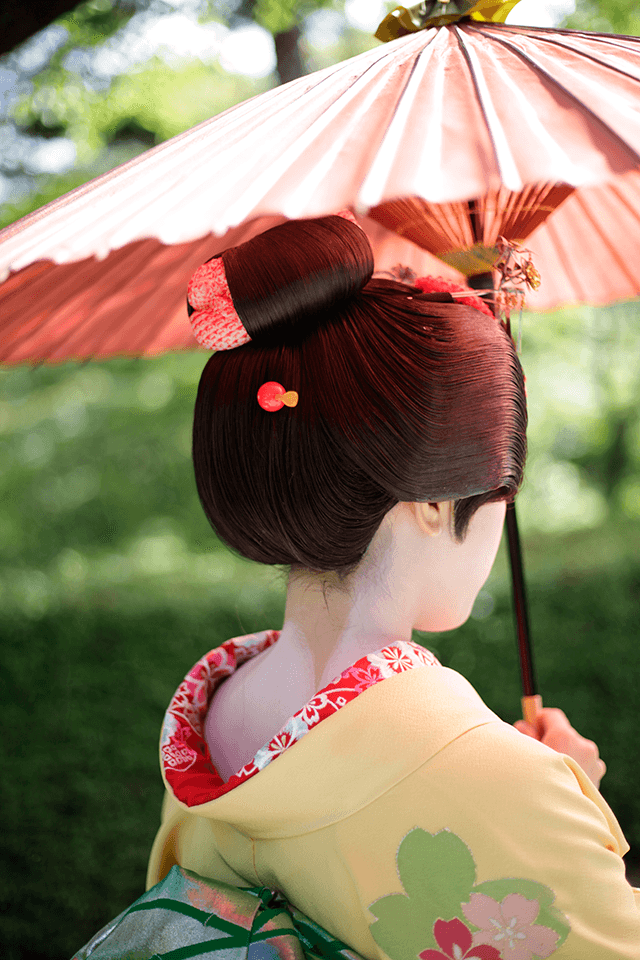A character steeped in Japanese art and culture, the Akita bijin is recognized throughout the country as a national ideal for beauty. Join us in our continuing Akita series as we count the ways in which her far-reaching inspiration endures.
Ask most people in Japan what comes to their minds when they hear the word “Akita,” and the Akita bijin, or Akita beauty, is probably the first thing. In fact, she is so well known in Japanese culture that her “look” is almost a paragon of traditional Japanese female beauty. She has pale skin, a rosy flush to her cheeks, alluring eyes, and a long, straight nose.
This image is so persistent that amateur anthropologists over the past generations have tried to find a relationship between the land and history of Akita and the “fairness” of its women. Some of the possible reasons include the prefecture’s fresh, clear water, the quality of Akita rice, and other natural influences. One Dr. Sugimoto, an Akita native, spent some time researching the matter and published his findings in a Bungei Shunju magazine article in 1966, where the good doctor argued that the women were blessed with a “beauty that was [in part] due to … short daylight hours and the remoteness from other prefectures due to the mountains.”
However, one interpretation, offered in an article on the Japanese language and culture site Tofugu (and which could just be a beautiful legend), is that the features that we associate with the Akita bijin belonged to a single woman: the legendary poetess Ono no Komachi. She came to fame in Kyoto during the Heian period, and was renowned for her beauty, the sensitivity and complexity of her verses, and her many love affairs. As tradition goes – in Akita at least – Ono no Komachi was the daughter of a local lord from the area that would later be known as Akita. Of course, given her historical legacy, many different areas want to claim her as a “native daughter.” Nonetheless, we like the idea of a figure from the far-flung north making a hit in the capital city, so that’s where our hearts lie.
You can see one of her poems below, which demonstrates a sensibility that would have delighted her lovers and perhaps driven her rivals in love – or in poetry – to fits of envy:
Was I lost in thoughts of love
When I closed my eyes? He
Appeared, and
Had I known it for a dream
I would not have awakened.

A depiction of Ono no Komachi by Hosoda Eishi, painted between 1793 and 1797, hangs at the Rijksmuseum in Amsterdam
Ono no Komachi was celebrated for her beauty, the qualities of which also happen to match the Akita bijin “type”: white skin, those captivating eyes, and a long dainty nose. Could it be that this legendary poet was the inspiration not only to her many lovers at court, but also for a standard of beauty recognized throughout Japan? It’s lovely to consider, at the very least.
Immortalized on Both Page and Stage
A celebrated beauty with a sensational love life is naturally the stuff of great theater, so it’s only natural that there are several famous Noh plays that dramatize her life, loves, and gift for verse. One of them, “Sotoba Komachi,” was reworked into a modern play by the great Japanese writer Yukio Mishima.
Brands Love a Beauty
It’s fitting that the name “Komachi” has become a shorthand way to refer to any great beauty. The name of this celebrated Akita bijin is now associated with a variety of different products, from the celebrated Akita Komachi rice variety to the Shinkansen train line that heads north up into Akita – designed by famed industrial designer Ken Okuyama, who set the look of a pair of Ferrari’s models in the 2000s. Of course, along with these products, the ideal embodied by the Akita bijin and other pale Japanese beauties has also inspired countless lines of skin whitening creams, long gloves, and massive sun visors meant to ensure that their wearers stay fair, year round.
She’s Big on the Festival Scene
On the second Sunday of June, in the city of Yuzawa, a festival is held to honor Ono no Komachi. To mark the occasion, seven young women dressed in kimono and ichime-gasa – wide-brimmed hats with nearly floor-length veils – each recite one of the celebrated poet’s verses.
She Inspired a Northern Geisha Tradition
Although they were not as well known as those in Kyoto, Akita had a lively community of geisha performers well into the 20th century. However, over the last several decades, the practice had died out, and with no senior teachers to pass on their knowledge, the Akita geisha were poised to fade into a historical footnote. However, a young local entrepreneur, Chinatsu Mizuno, had other ideas. Hopeful that her efforts could help resuscitate this tradition and draw attention to Akita’s unique cultural heritage, Mizuno spent a great deal of time investigating the history of the once-thriving pleasure quarter along the Asahi River in Akita City, where geisha entertained both wealthy locals and travelers. With support from local governments and crowdfunding projects, she launched a company called Sen, which is reviving the geisha tradition by training maiko (apprentice geisha) how to dance in the classical style, perform the traditional tea ceremony, and play musical instruments. They now perform at Matsushita, a former restaurant that has been transformed into a two-floor performance space/café/bar, as well as at hotels and other venues around the area. Watching these Akita maiko engaged in the beautiful practices of the past, it’s easy to recognize a gorgeous tradition that lives on in their graceful movement, clear voices, and fair faces. It’s a beauty that dates back centuries, and only continues to improve with age.
Matsushita offers two floors: a café on the first floor and second floor bar featuring sake from all of the breweries in Akita. It’s also a perfect place to see the maiko perform. To find out more about the Akita maiko revival, and for other opportunities to catch a glimpse of these local beauties, visit http://bit.ly/TWAkitaMaiko










